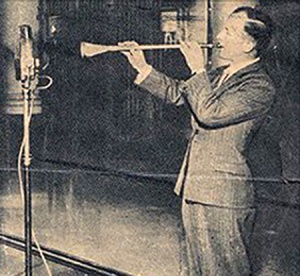On this day 100 years ago, a British excavation team exploring Egypt’s Valley of the Kings discovered a step that proved to be the beginning of a descending staircase. Thus began the opening of the first known largely intact royal burial from ancient Egypt— Tut’ankhamūn’s tomb.
Among the “wonderful things” that Howard Carter saw when he entered inner chamber were two trumpets—one made of silver, and one made of bronze.
Seeing the potential for an extraordinary recording, in 1939 the BBC persuaded the Matḥaf al-Miṣrī (Museum of Egyptian Antiquities) to schedule a world broadcast. The British Army bandsman James Tappern was engaged to perform on the historic instruments.
In what some people saw as the notorious “curse of King Tut”, five minutes before the live broadcast was to begin the watchmen’s lanterns failed and the museum was plunged into darkness; but candlelight saved the day, and enthralled listeners heard what were presumably sounds last heard more than 3,000 years earlier.
This according to “Recreating the sound of Tutankhamun’s trumpets” by Christine Finn (BBC news: Middle East 17 April 2011; RILM Abstracts of Music Literature 2011-22278).
Above, a photograph of Tappern at the museum. Below, a narrative fleshes out the story; the recordings of Tappern playing the trumpets begin around 10:45.









